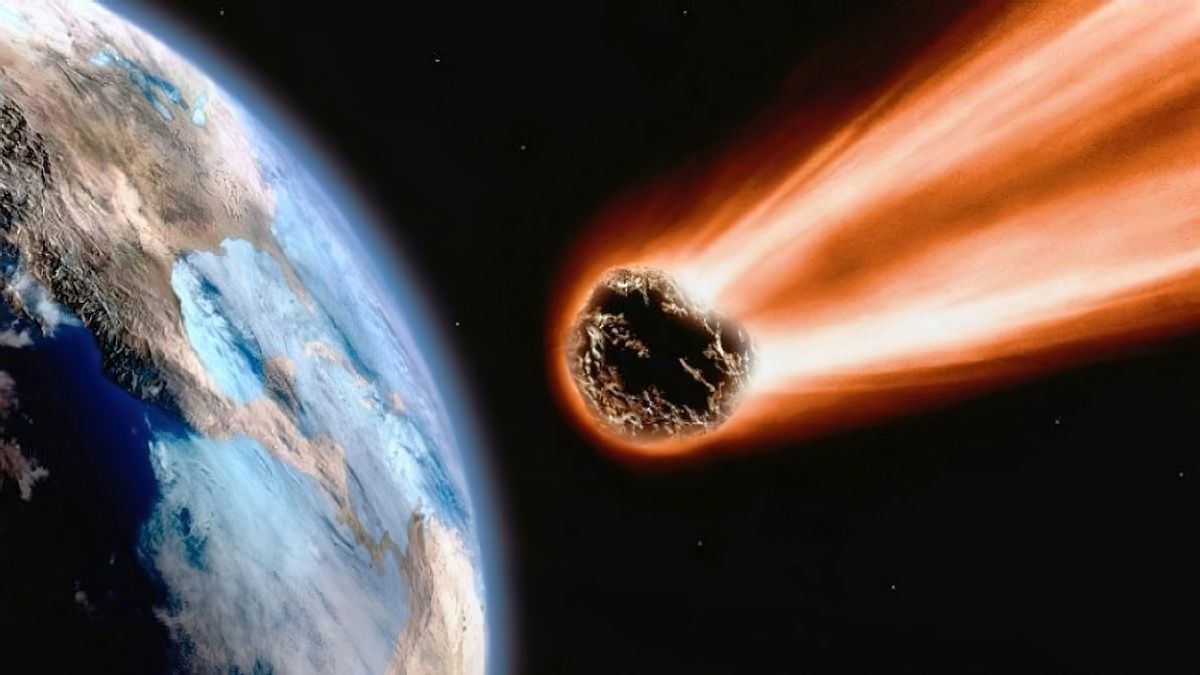When we consider the impact of massive asteroids, the one that destroyed the dinosaurs is often the first to come to mind.
The colossal impact wiped T-Rex and Stegosaurus from the face of Earth and reshaped the course of evolution. However, scientists said that another colossal meteorite, approximately 200 times larger than the one that ended the age of dinosaurs, might have created an even bigger impact — jumpstarting life on Earth.
The huge space rock named S2 is thought to have crashed into Earth around 3.26 billion years ago, the study published in the journal PNAS said.
The impact might have been so massive, that it generated a tsunami bigger than any in known human history and boiled the oceans in the process.
So, how exactly did this monumental event contribute to the emergence of life on Earth? Here’s what we know.
The giant hit
Before the S2 meteorite struck Earth, the planet was still young and looked different compared to today.
It was mostly a water world with only a few landmasses sticking out of the sea, and life consisted of simple, single-celled microorganisms.
When the massive meteorite, about the size of four Mount Everests, collided with Earth, the impact was swift and ferocious, Nadja Drabon, lead author of the study and assistant professor of Earth and planetary sciences at Harvard University said in a CNN report.
The collision carved out a 500km-wide crater in land and hurled pulverised rock at extreme fast speeds, forming a cloud that circled the globe.
“Imagine a rain cloud, but instead of water droplets, it’s like molten rock droplets raining out of the sky,” Drabon explained to the BBC.
The meteorite’s impact would have triggered a giant tsunami, tearing up the seafloor and flooding coastlines.
The immense energy created from the collision would have generated extreme heat, causing oceans to boil, with water evaporating by tens of metres, while air temperatures soared by up to 100 degree Celsius.
The skies would have turned black, choked with dust and debris, blocking sunlight and killing any simple life that depended on photosynthesis, especially near the surface or in shallow water, reported BBC.
Eventually, rains replenished the upper layers of the oceans, and the dust settled.
Despite these violent conditions, researchers theorize that life might actually have thrived in the aftermath.
“We think of impact events as being disastrous for life. But what this study is highlighting is that these impacts would have had benefits to life, especially early on… these impacts might have actually allowed life to flourish,” Drabon told The Metro.
A ‘fertilizer bomb’ for life
Drabon and her team have been exploring the Barberton Makhonjwa Mountains in South Africa, thought to be the site of the S2 impact, to uncover clues about the ancient meteorite strike.
During their fieldwork, they collected nearly 100 kg of rock, and sent them the lab for analysis. The result were surprising.
The evidence showed that the violent disturbances caused by the meteor had churned up nutrients like phosphorus and iron that fed simple microbes.
“Life was not only resilient, but actually bounced back really quickly and thrived,” Drabon told BBC. She likened this recovery to brushing teeth: “It kills 99.9 per cent of bacteria, but by the evening they’re all back, right?”
The findings suggest that these massive impacts acted as a “giant fertiliser bomb,” distributing essential nutrients such as phosphorus across the globe. Tsunamis triggered by the impact likely brought iron-rich water from the ocean depths to the surface, fueling microbial life.
“It seems that life after the impact actually encountered really favourable conditions that allowed it to bloom,” Drabon explained.
Their study concluded saying, “Giant impacts were not just agents of destruction but also conferred transient benefits on early life."
With input from agencies


)

)
)
)
)
)
)
)
)



